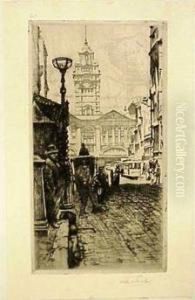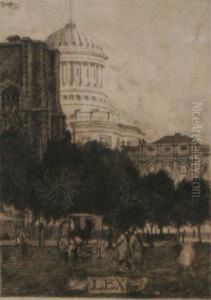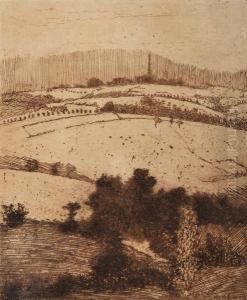John Alexander Th. Shirlow Paintings
John Alexander Thomas Shirlow was an Australian artist, born in 1869 in Melbourne. He is most renowned for his work as an etcher, known for his detailed and atmospheric images of Melbourne and its surrounds. Shirlow's contribution to Australian art is significant, particularly in the realm of printmaking.
Shirlow's early life was marked by a passion for art, which led him to pursue studies at the National Gallery of Victoria Art School. He studied under notable artists such as Frederick McCubbin and Bernard Hall, which helped him develop his skills in painting and drawing. However, it was etching that truly captured his imagination and became his primary medium.
Throughout his career, Shirlow was dedicated to the craft of etching, a form of printmaking that involves incising a design upon a metal plate with a sharp tool called a burin. He was particularly influenced by the works of Rembrandt and Whistler, which is evident in his mastery of light and shadow and the atmospheric qualities of his prints.
He held a deep fascination with the urban landscape of Melbourne and was adept at capturing the city's architecture and street scenes with a sense of intimacy and character. His etchings present a historical snapshot of the city in the late 19th and early 20th centuries, documenting a Melbourne that has since undergone significant transformation.
Despite the fact that Shirlow was not as widely recognized as some of his contemporaries during his lifetime, his work has gained considerable appreciation posthumously. He was a founding member of the Australian Painter-Etchers' Society, and his commitment to the art form contributed to a revival of interest in etching in Australia.
John Shirlow passed away in 1936, leaving behind a legacy as one of Australia's most important etchers. His prints remain a valuable part of Australia’s visual history and continue to be celebrated for their technical proficiency and evocative representation of urban life in the early 20th century.


